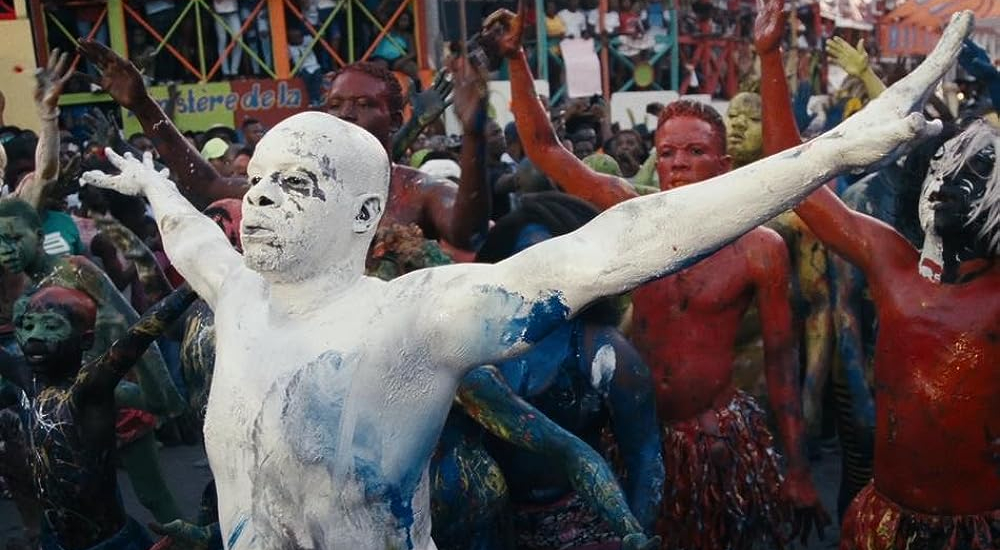Kite Zo A is the most visually stunning film of the year. The documentary traces the lineage of art as a form of protest for the Haitian people. Whether it's dance, music, poetry or even rollerblading, there's no shortage of expressions or styles to get their message across.
The film uses the poetry of Gabriel Jerry Wood as a through-line, but there's no narrative per se, just a series of a breathtaking performances from the people who live in one of the most oppressed nations on the planet. Although not every person spotlighted is a fountain of righteous anger. Some use their art to express their own inner torment or jubilation. Director Kaveh Nabatian makes sure to highlight many different religions and spiritual beliefs, too, including Christianity and voodoo. (The latter looks much different than what movies have depicted over the years.)
Fans of sensory overload documentaries like Koyaanisqatsi and Baraka will find plenty to immerse themselves in. For more casual viewers, Kite Zo A hopefully sparks an interest in Haiti. The film is more of a snapshot than a full history. At just over an hour, there's plenty of wonder, but not a lot of context. An older musician fills in some details on life under the brutal Duvalier regime, which inspired the film's title (translated as Leave the Bones), but there's a lot of ancient and current history that would illuminate the art we're seeing. Even with changes to the country's constitution and recovery efforts after the 2010 earthquake, poverty grips the country. After hard-won independence centuries ago, Haiti's colonizers have kept their boots on the people's necks. Many people (myself included) never learned this in their world history classes.
But even with some supplemental reading required, Kite Zo A is one of the most impressive works of the year.

